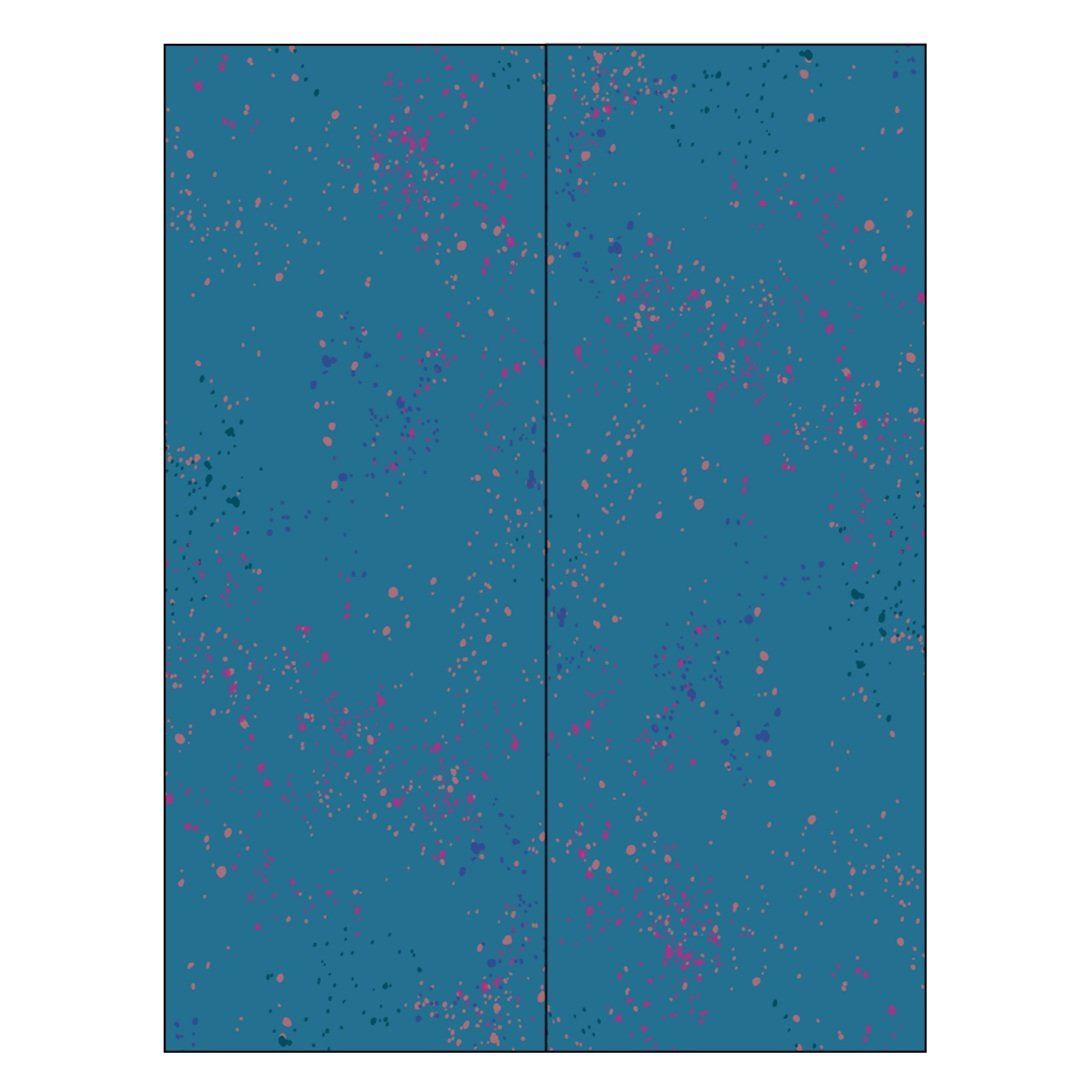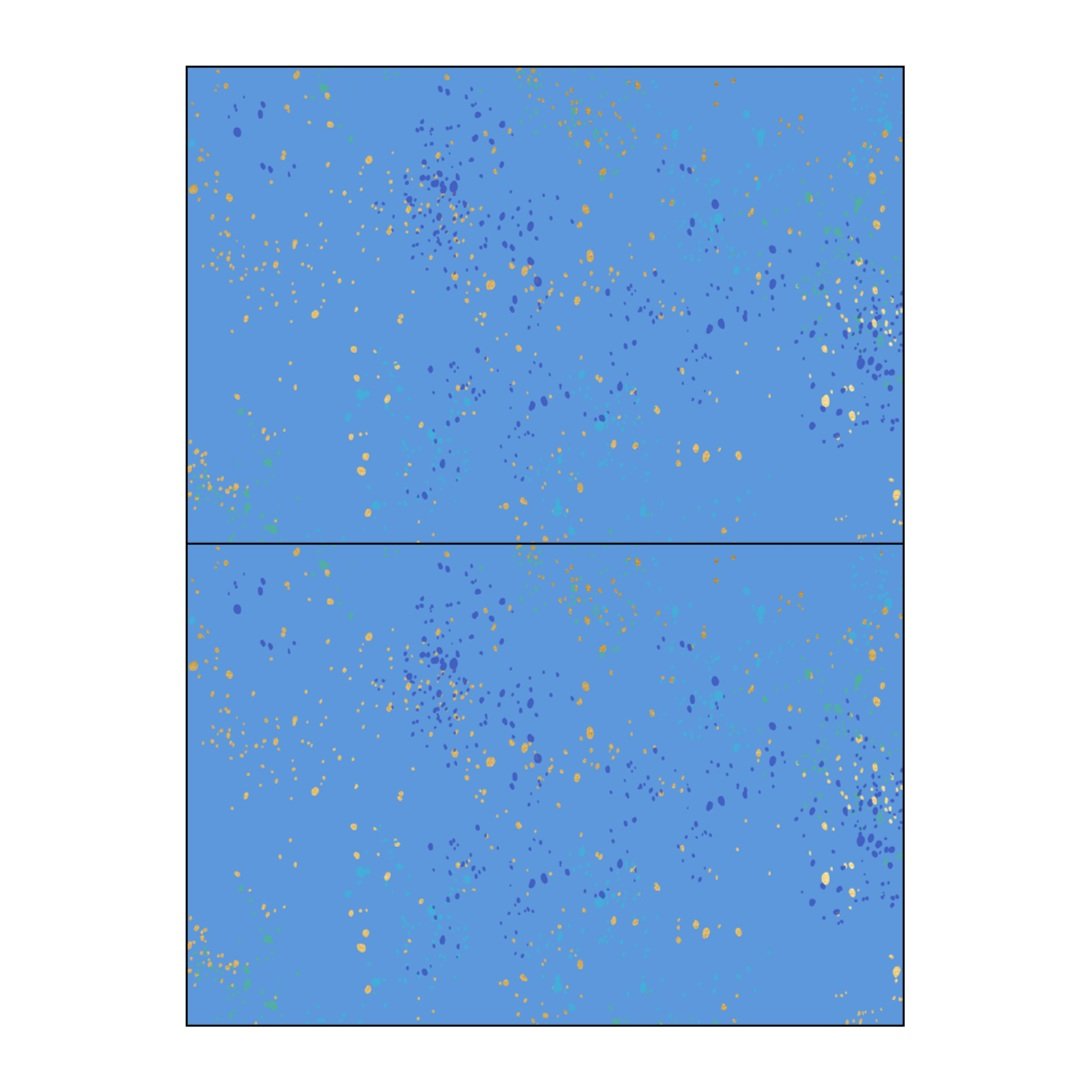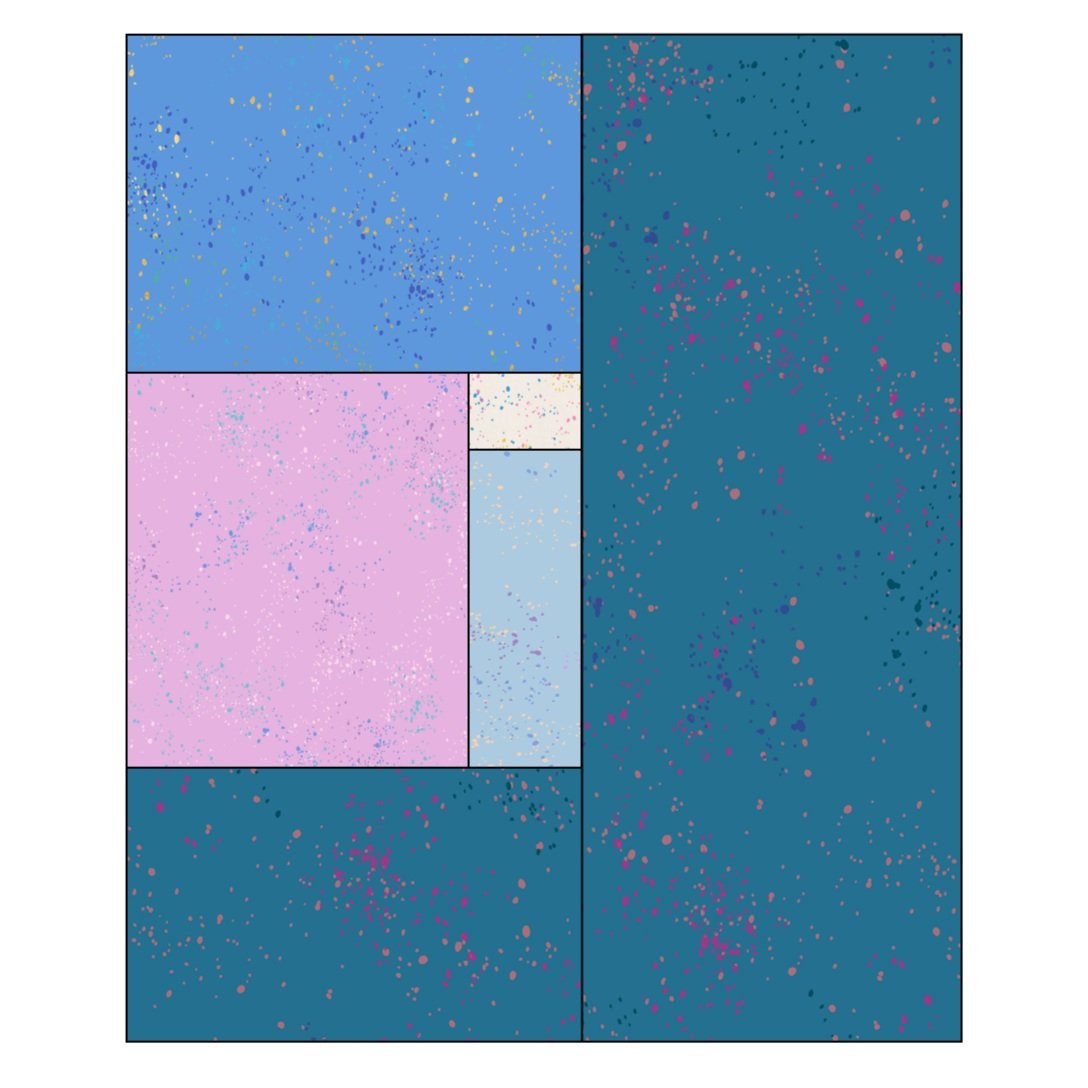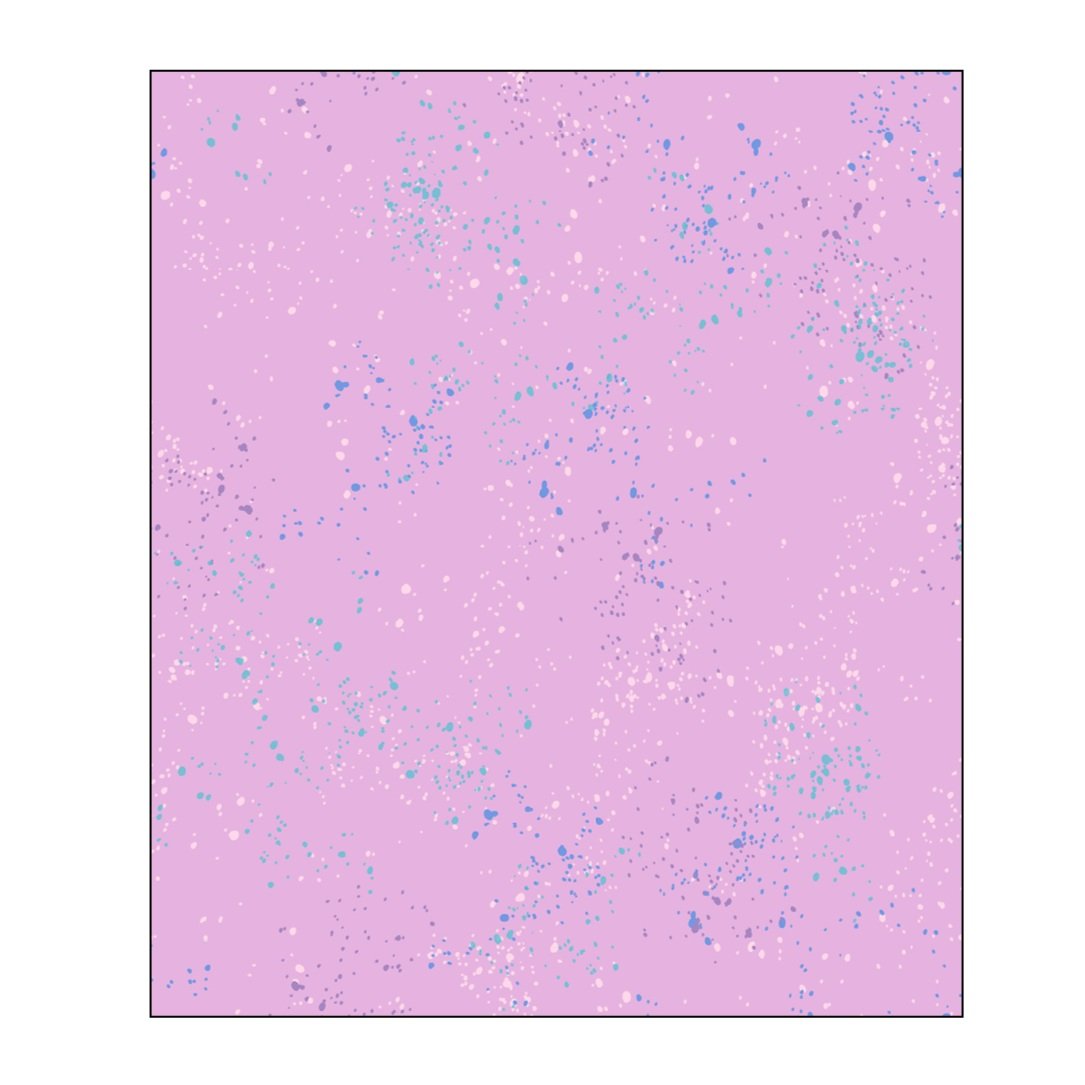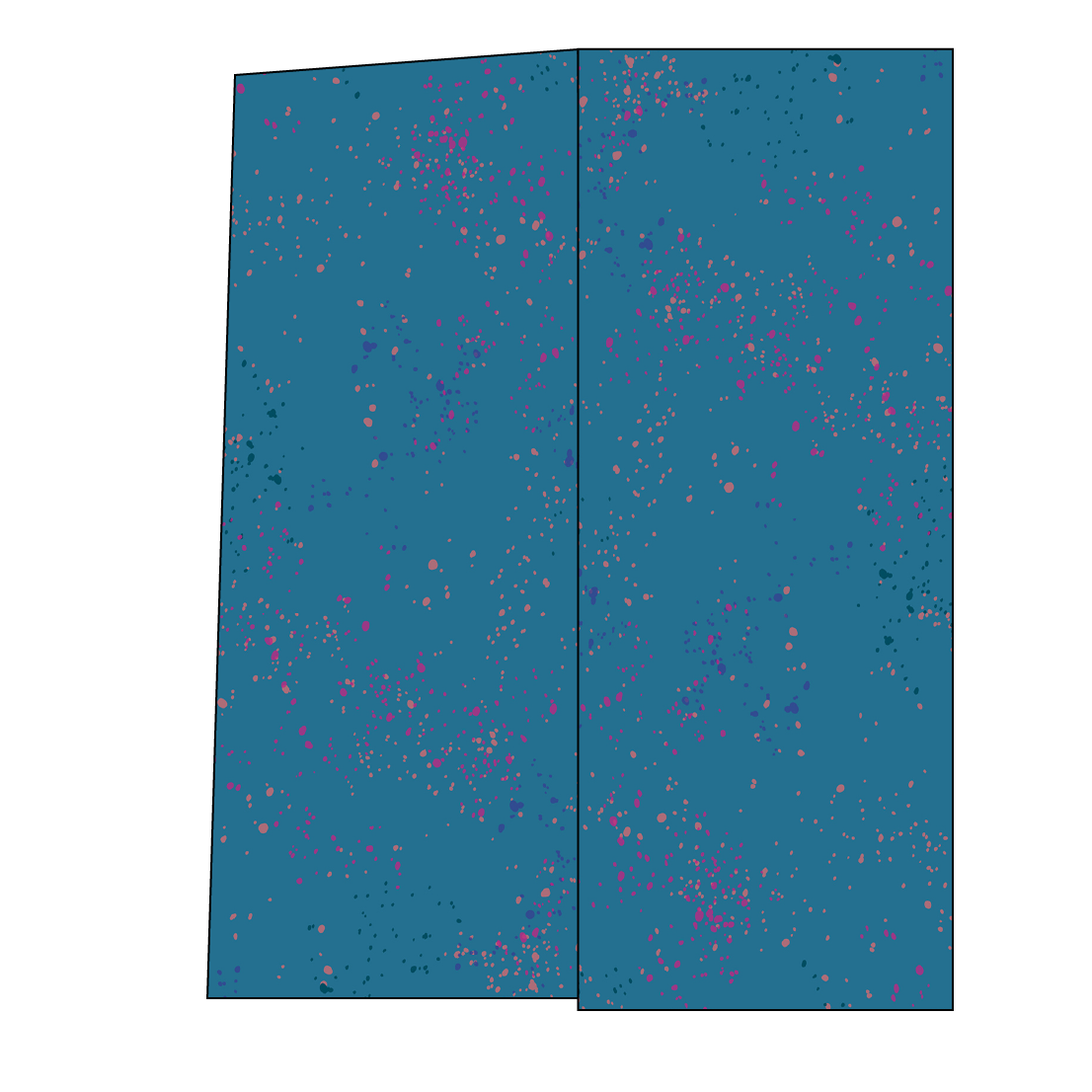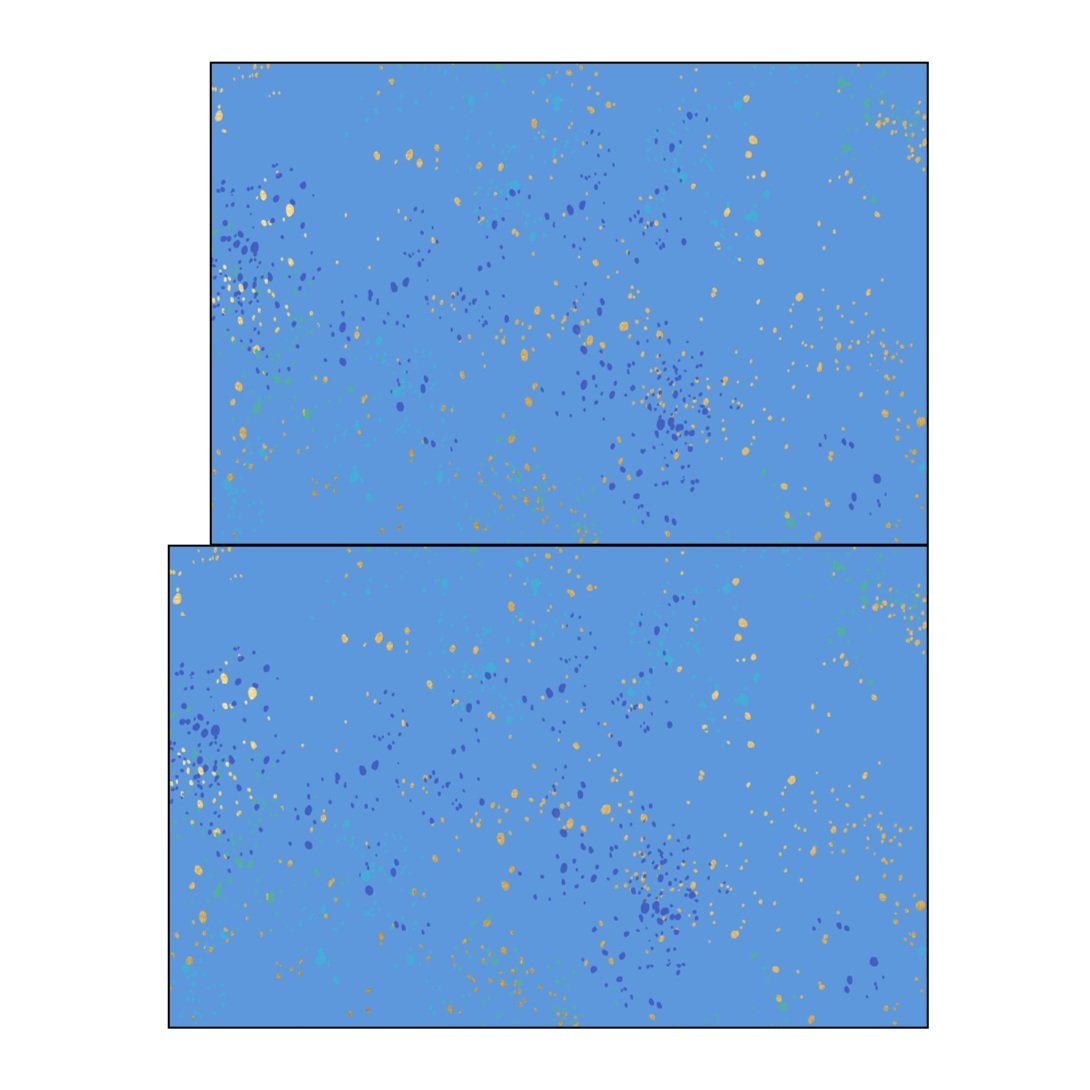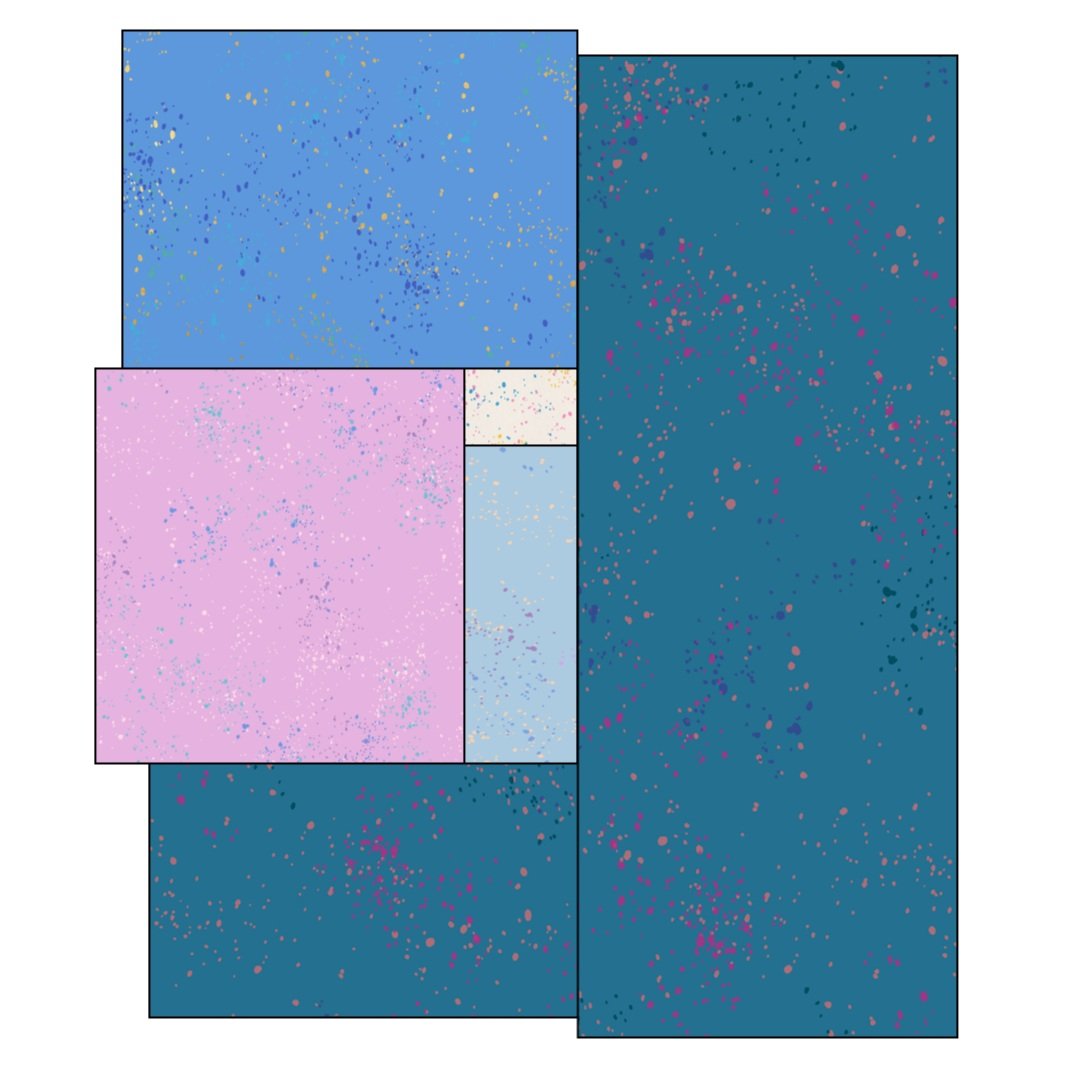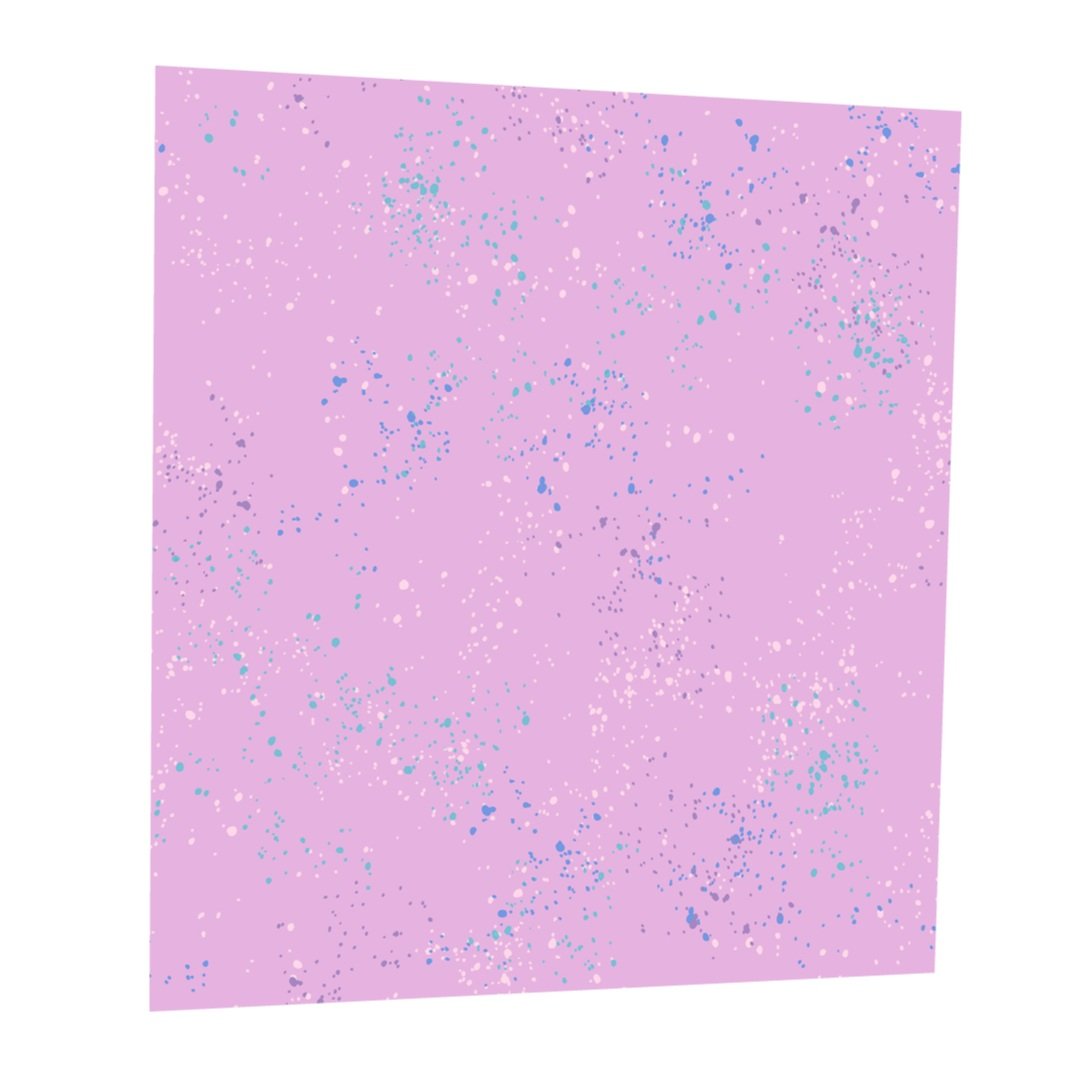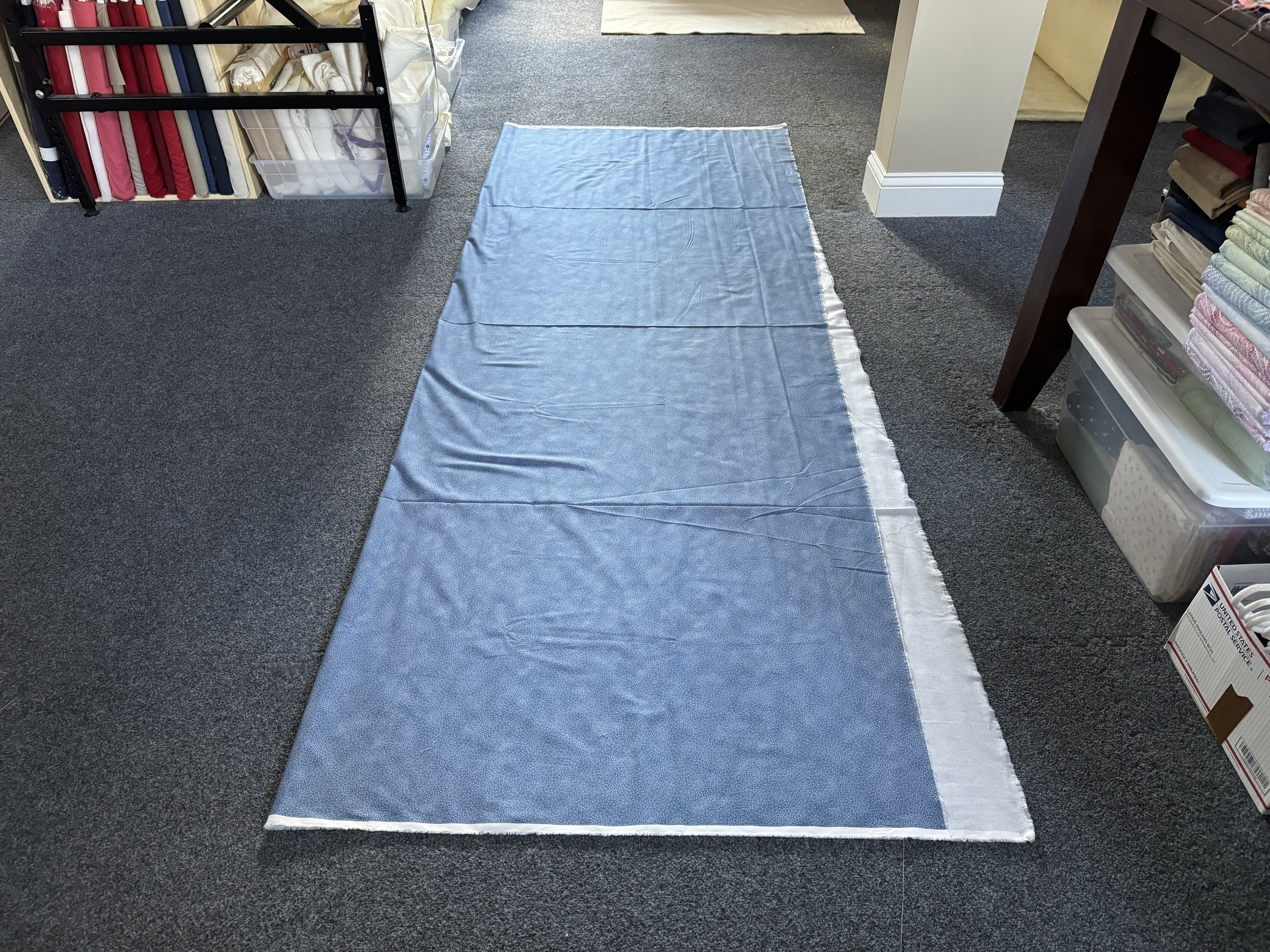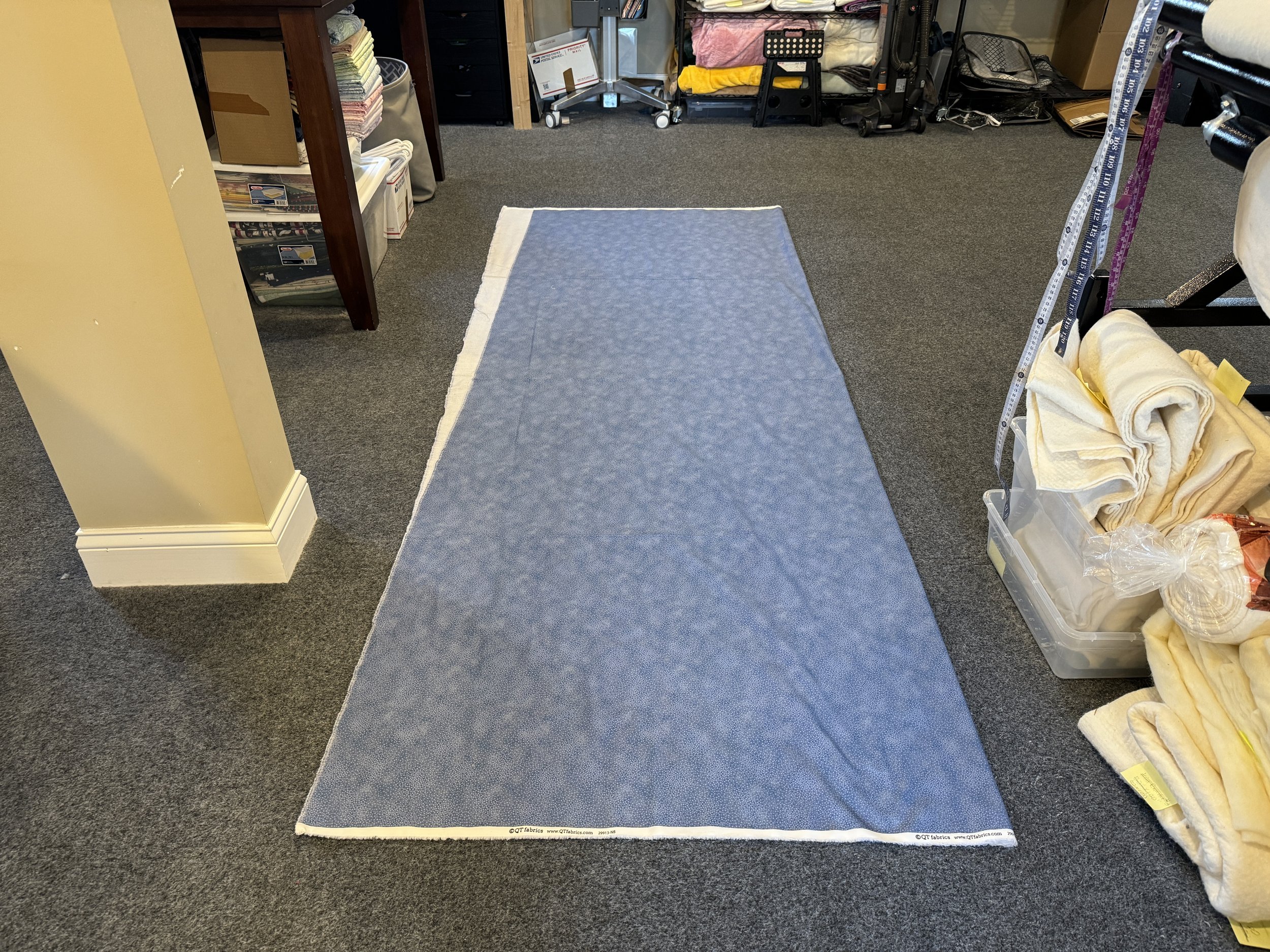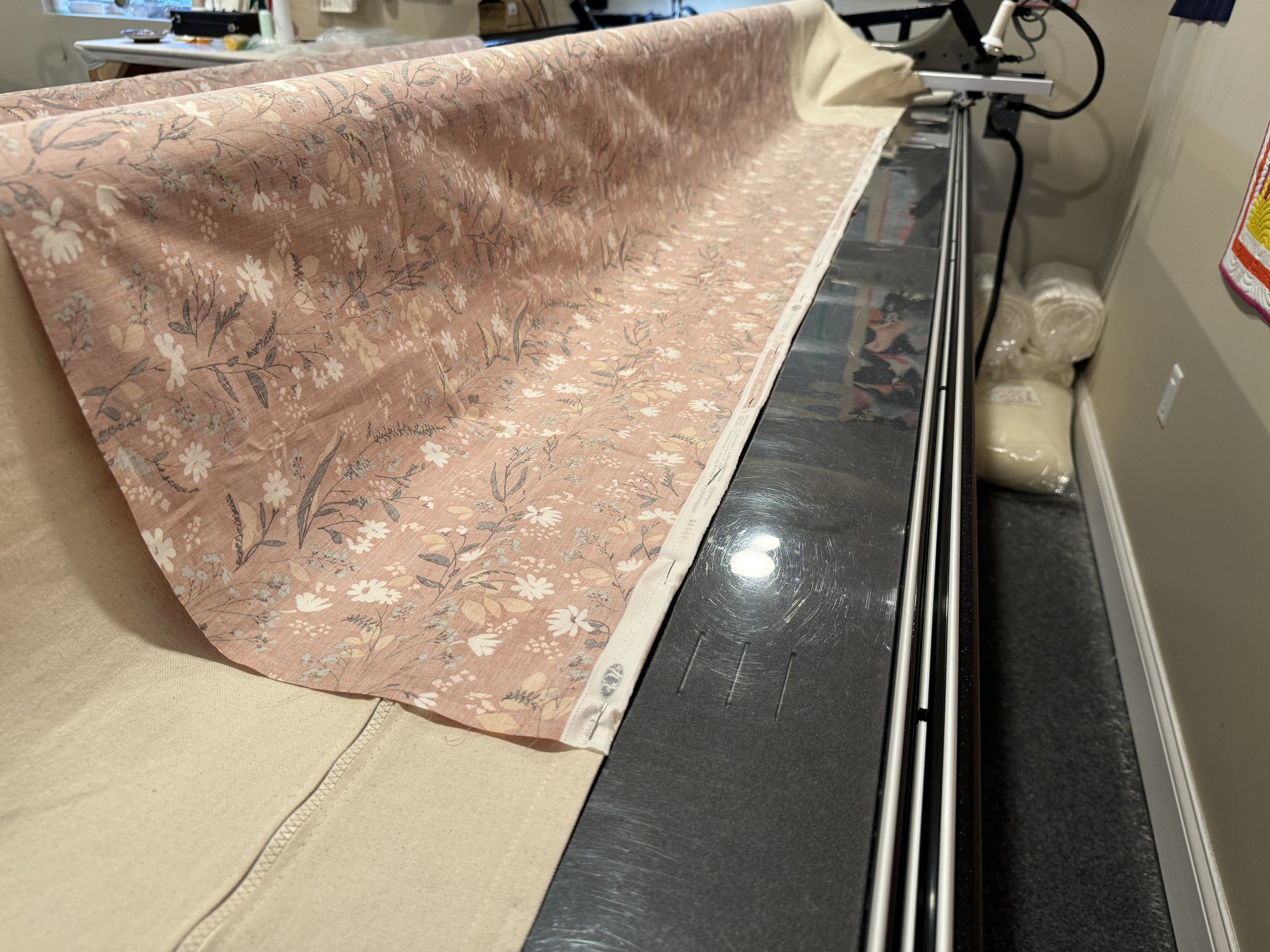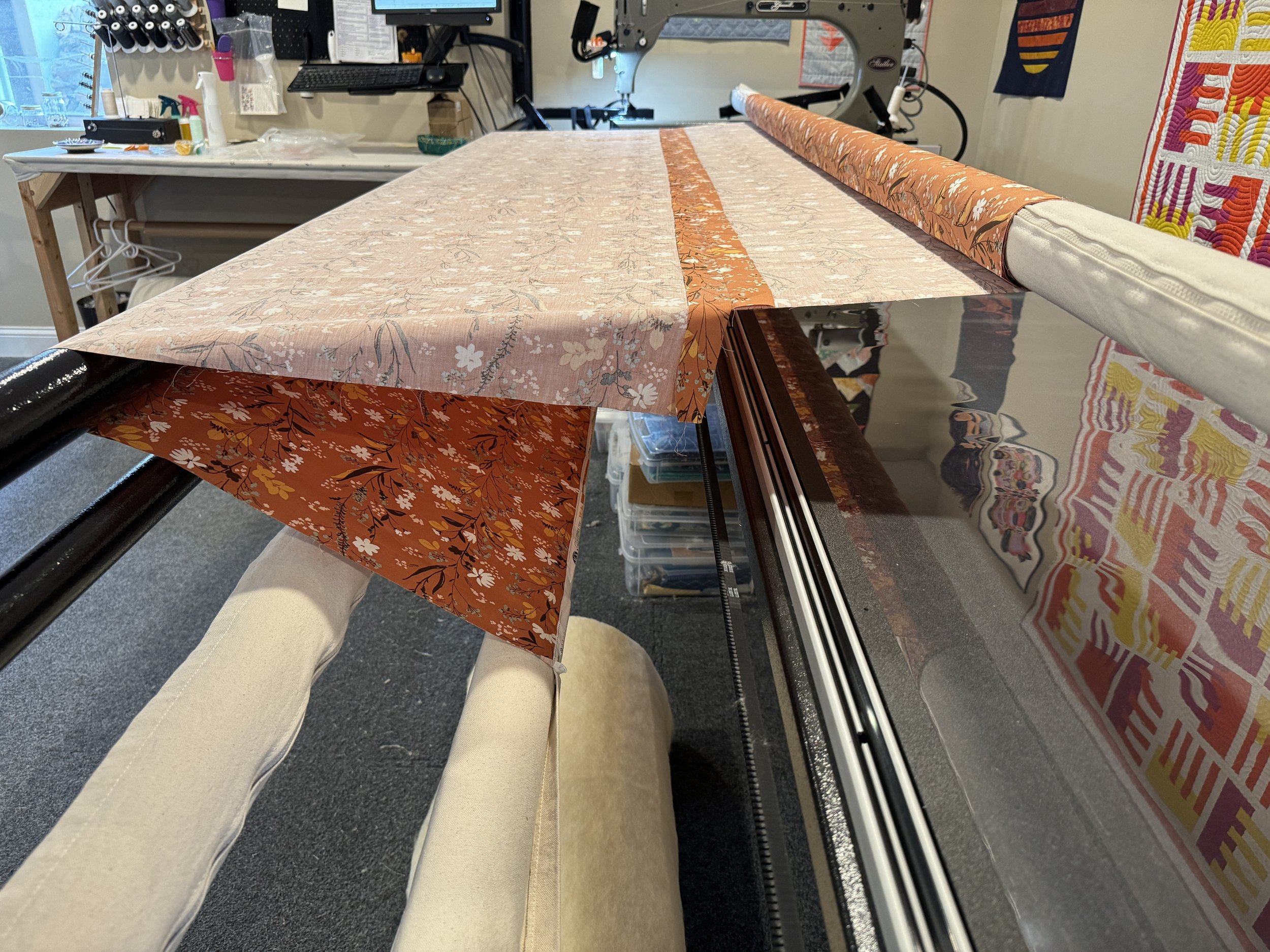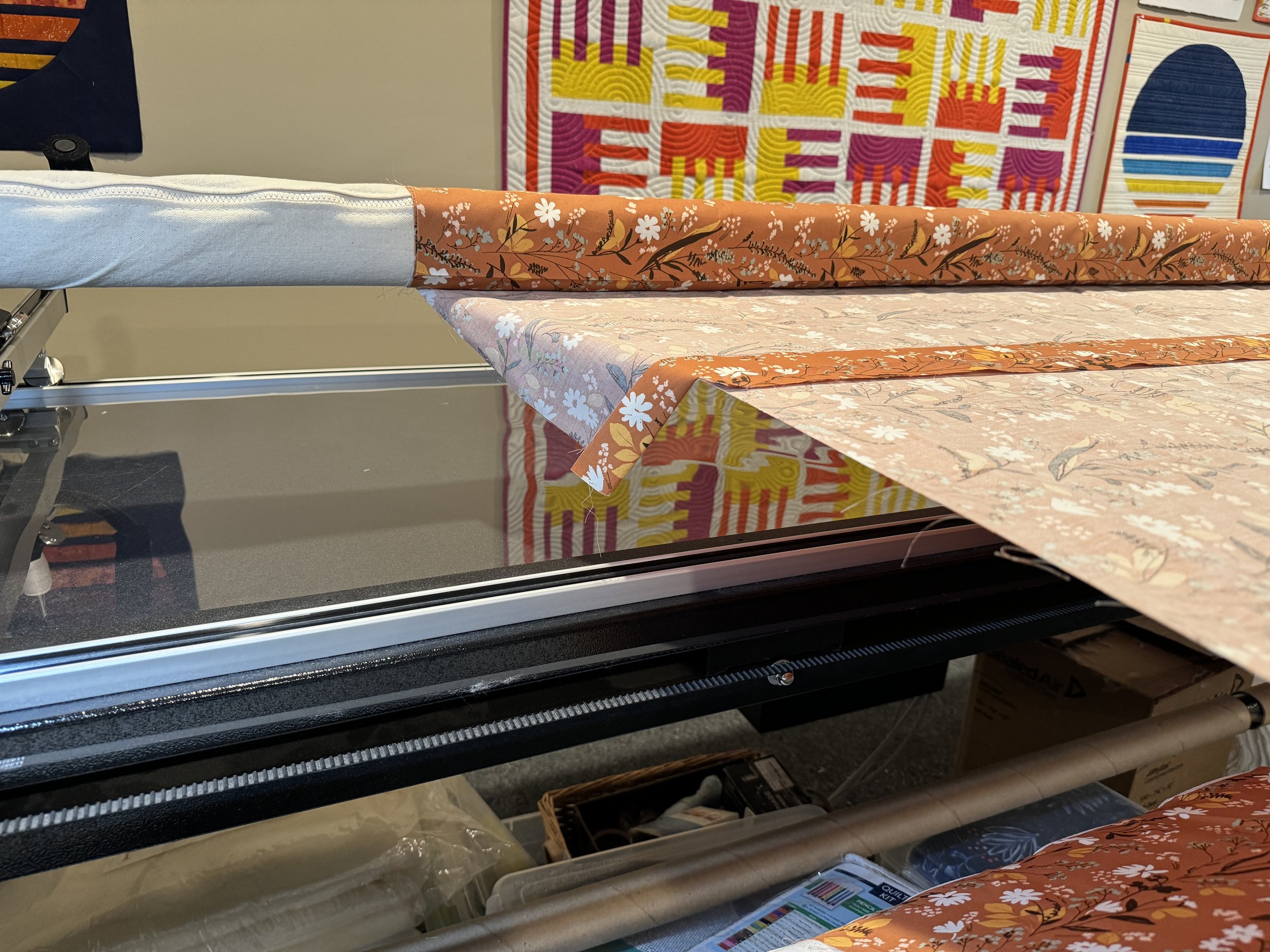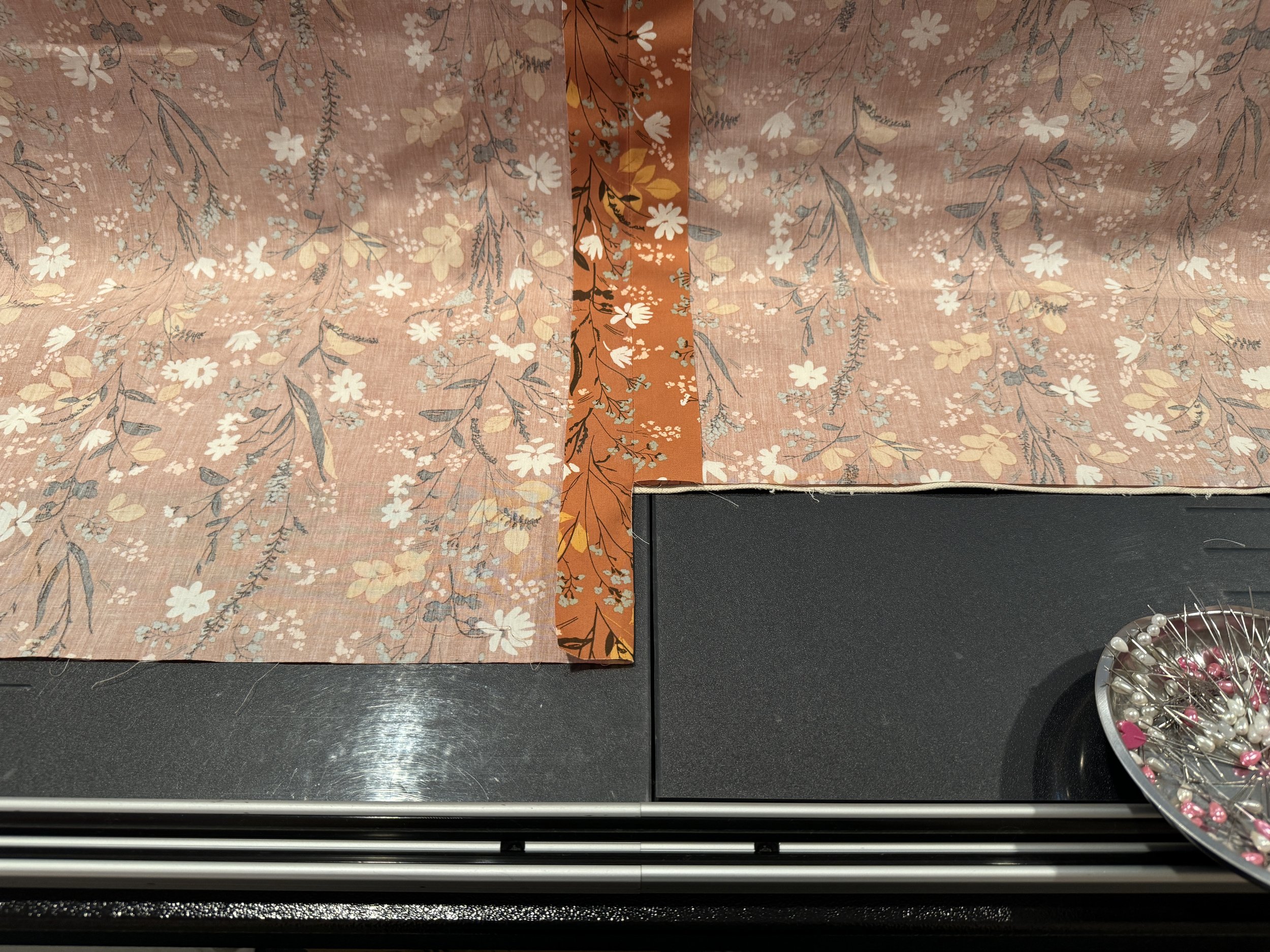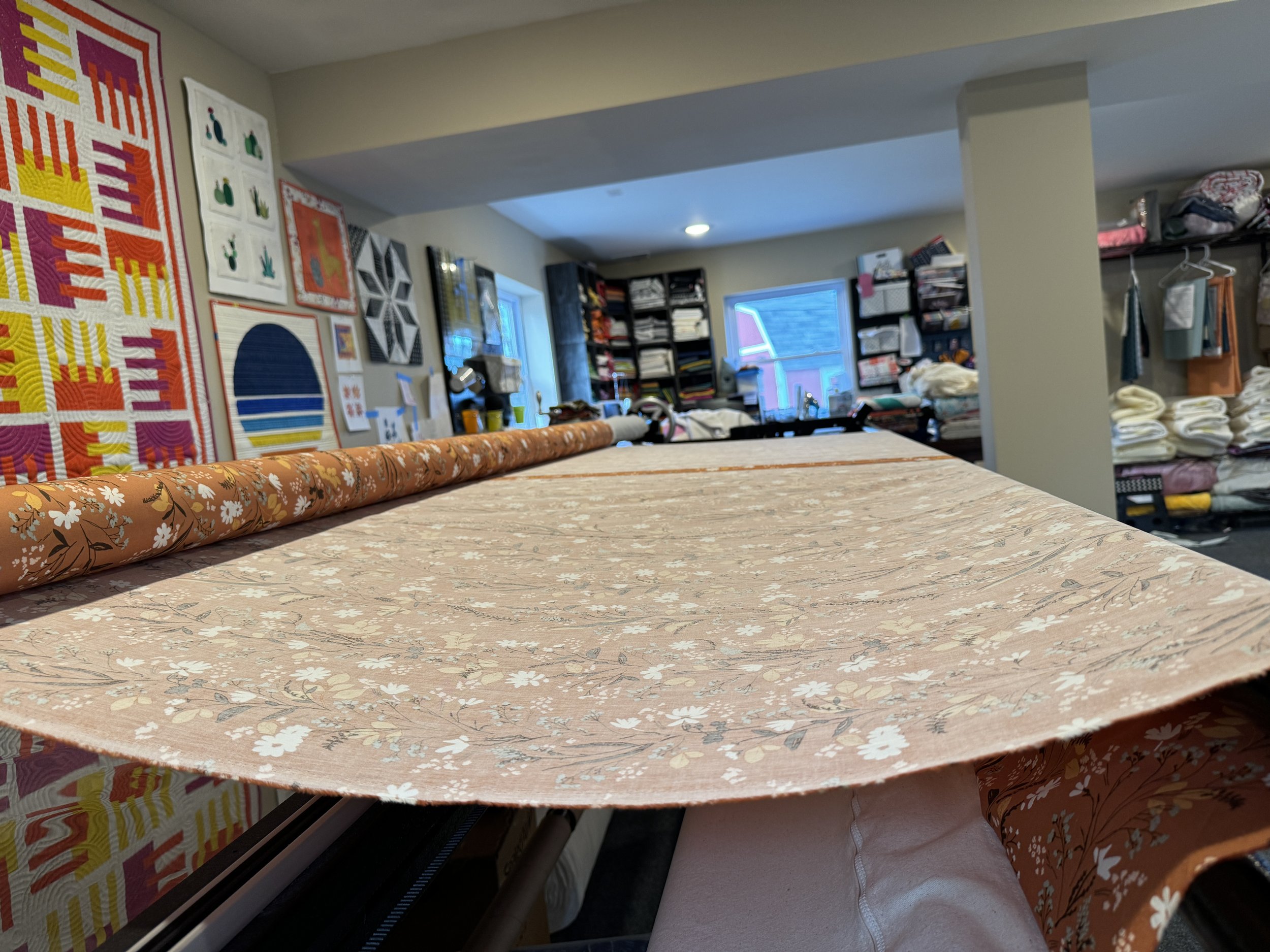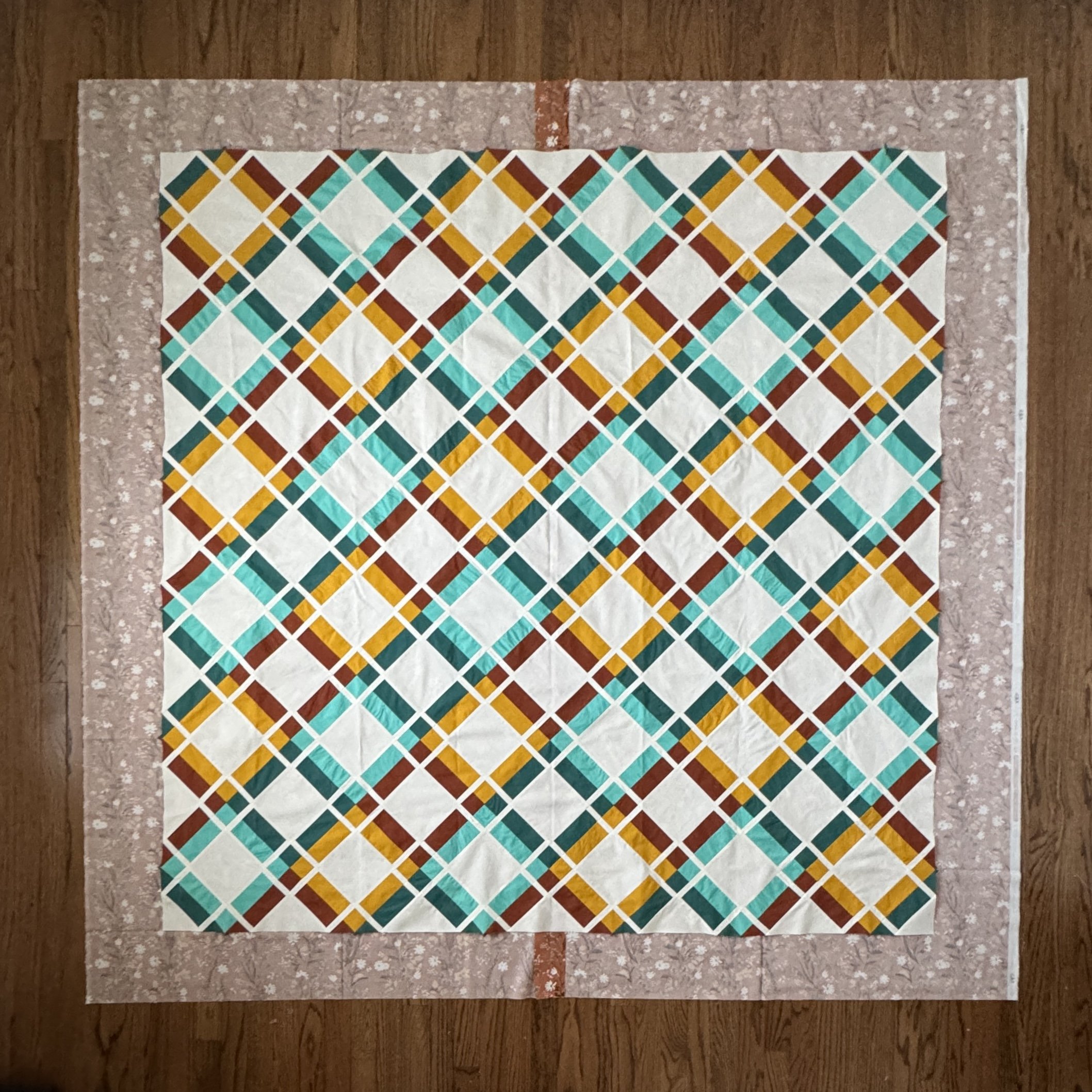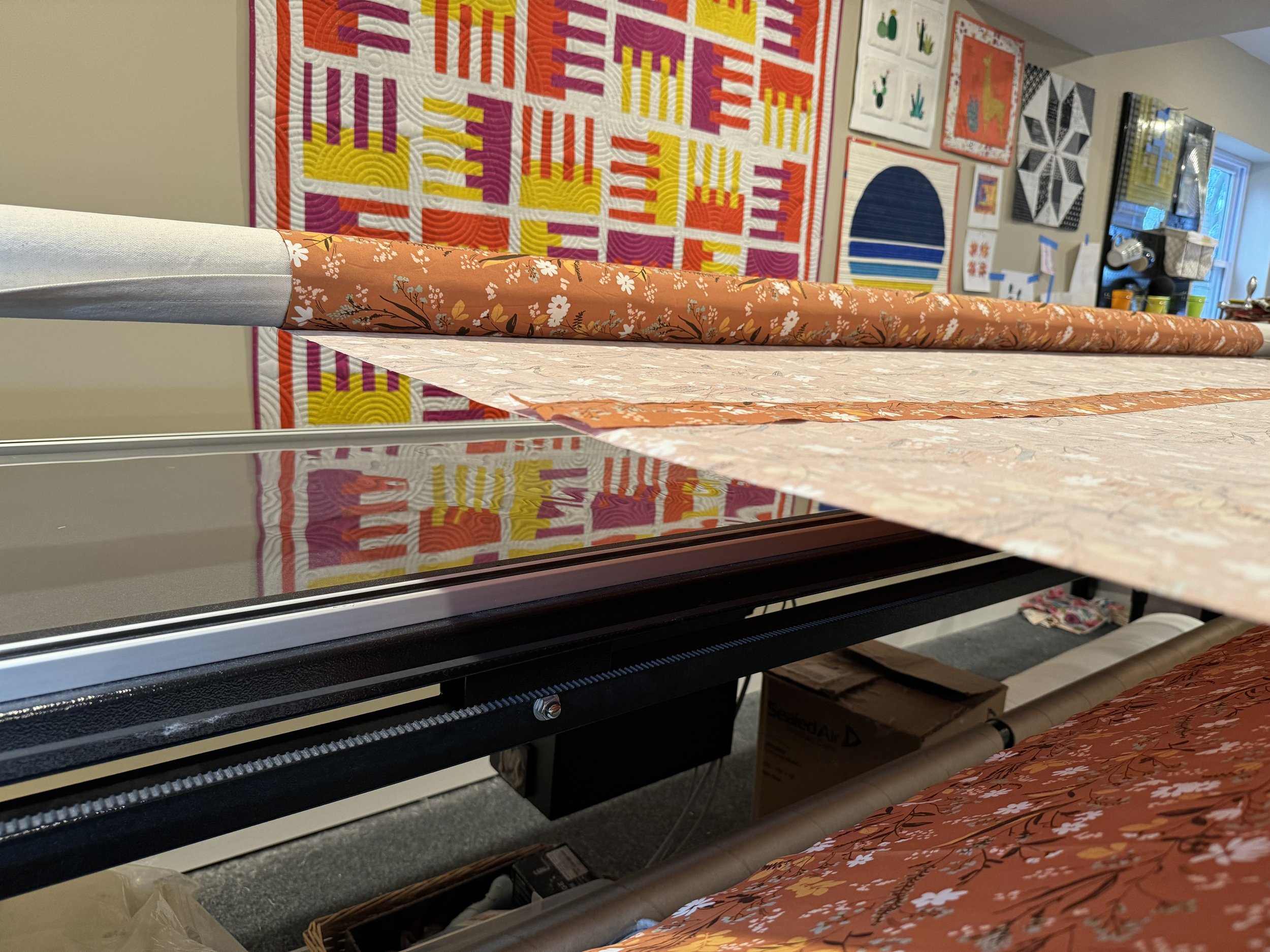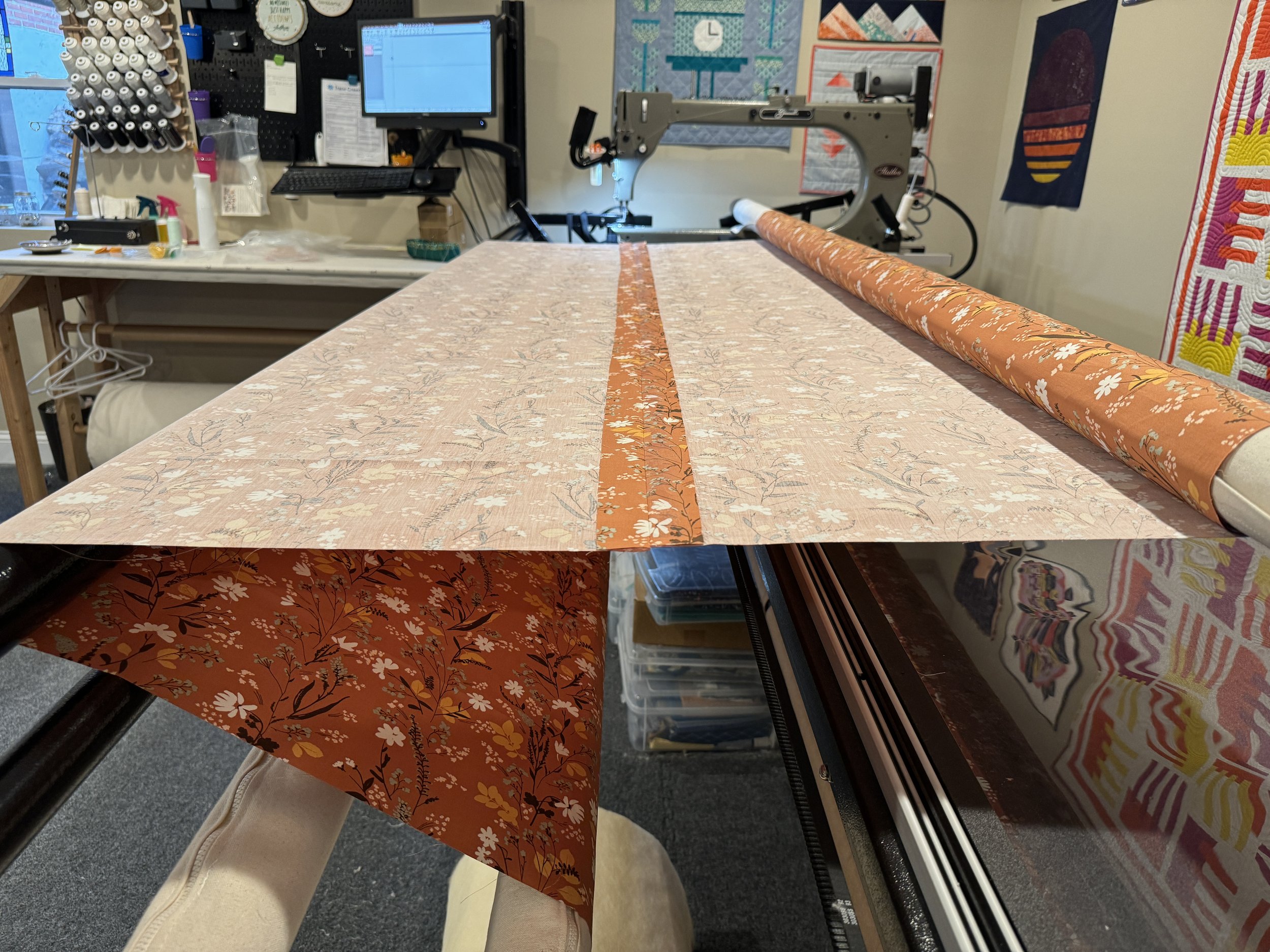Quilt Prep: Square Backings
It’s me again, Margaret! And just like those calls Margaret was receiving, we gotta talk about something a bit taboo; squaring up backings. (If you get this reference, I adore you. If you don’t, please ignore the very random childhood flashback I just had and know that it’s not at all important to the rest of this post.)
A square backing is the very first step in setting us up for success during the longarming process. The backing is the foundation upon which we build everything else and if we don’t get it right, everything else can deteriorate exponentially. With that being said, you might be surprised to know that probably 75% of the backings sent to us are not technically square. That’s right, that probably means you, doesn’t it? HA! Don’t feel ashamed, silly, or bad, you are in great company! And if I didn’t mention it while it was in the studio I was able to work with it without any trouble and there was no need to make a fuss about it. There are no quilt police at TCQ, promise! I think most folks just don’t realize it’s importance and bypass that step. What I have taken away from this is that many folks might not understand what a square backing is, why it is important, or maybe simply what to do about it. Hopefully I can address that here in a way that is helpful, educational, and above all else - encouraging!
(And um, if you don’t want to read any further the answer is YES. TCQ is more than happy to piece or square your backing so you don’t even have to worry about this. We got you. :) )
What is a square backing? ‘Square’ in this sense means it has four straight sides and four 90 degree angles. (Note: this is different than it being square in shape - most backings are rectangular in shape, but they are square in the sense of having straight sides and 90 degree angles.) The easiest way to see if a backing is square in this sense is to fold it in half on a flat surface. When one long side meets the other long side, do they line up nicely? Does the rest of the fabric lay flat? Do the corners meet at a right angle? If you answered yes to all of those, great! Unfold and then fold in half the other way and test again. Still a nice straight matchup and all right angles? Perfect! It is square and you are a rock star! The illustrations below show some different ways backings can be square.
What isn’t a square backing? The most common thing we see is when two lengths of fabric are pieced together but the one length is longer than the other, or stretches during piecing, and they were not trimmed evenly after piecing. We also often see wide backs that were not cut straight when cut off the bolt, or have been washed and distorted. The other misconception is simply that if the backing is big enough for the quilt, it’s fine, which isn’t really the case. Below are both some illustrations of shapes that are not square, as well as examples of actual backings recently received that were not square.
Why is it important to have a square backing?
The backing is attached to the machine to provide a foundation on which to lay the batting and quilt top. If we do not have straight lines to follow when attaching it creates various problems.
Here is a backing on which I decided to pattern match the floral fabric so it looked seamless. While the two pieces of fabric I used may have started off the same length, after shifting them to match the pattern the top and bottom edges were no longer in line with each other. This backing is not square.
Sometimes it isn’t so obvious. To check, you can fold your backing in half, as demonstrated in Photo 1 below, and see if the edges and corners align. The top and bottom of our example align nicely, but the sides clearly do not.
Let me demonstrate what happens when I use the straight edges of this backing to pin it to my machine. You can see in Photo 2 how nicely that selvage lines up with my leaders (the canvas that is attached to the machine.) All seems well except you can see in Photo 3 and 4 how that extra fabric flaps around on the edges. This could get caught in the machine and cause all sorts of problems. It also makes it hard to place the quilt top on the backing. If the top gets lined up with an outside edge that does not run the length of the quilt, we could run out of backing on that edge halfway into quilting it. Yikes!
Here, I turn the backing to attach the uneven sides to the machine to get the nice clean lines on the sides. You can see in Photo 5 just how uneven these edges are. In Photo 6 I’ve lined it up as best as I can and just guesstimated how much overage to leave as I pin this backing all the way down the length of that edge. I had to do the same when pinning the bottom edge. The end result can be seen in Photos 7 and 8. One side of the backing is flat and taut while the other side droops. This is definitely not what we are looking for when creating the base upon which we will build the rest of the quilt.
Now it’s time to do it right. I took the backing off the machine and took a couple of moments to trim off the extra fabric on both ends so that all my edges were straight (Photo 9). You can see in Photo 10 how I laid my quilt top on top of the backing to double check that it was still large enough (remember, we like the backing to be 4” larger than the quilt top on all 4 sides!). Photos 11 and 12 show how nicely everything lines up. No extra flaps of fabric, no droops, nothing too tight. A perfect foundation on which to start quilting!
The Good News: You’ve potentially just learned you’ve sent me a backing that was not square, or what you thought was okay is not actually ideal. IT IS OKAY!! Please, please, do not stress about it, doubt yourself or be discouraged. It’s not easy to provide a perfectly square backing and we totally get that. Because it is so common that backings are a little off TCQ has developed a variety of shortcuts, tricks, and methods that allow us to move forward with what is provided. We’ve found it’s not practical to be too picky about these backings, nor do we want customers to feel so stressed about getting it perfect that it prevents them from sending quilts. So while it is probably true that 75% of the quilts sent our way are not square, it is also true that 75% of those we can manage just fine.
For the remaining backings that require extensive trimming or re-piecing, we will be in touch to let you know it is an issue before moving forward.
The goal in this post is simply to bring awareness about what it means to have a square backing, why longarmers ask for it, and how big of deal it is. If you find yourself worried about one of yours, curious for more details, or want us to piece your backing so you don’t have to worry about it, that’s all totally fine! Just give me a call (you can even call me Margaret) and we are happy to help!
-Lilo

